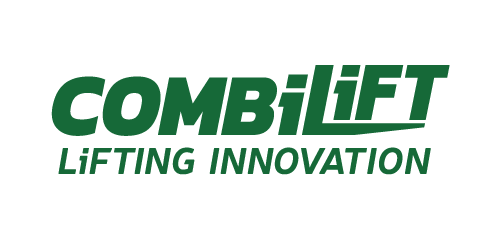Moving long loads through narrow aisles poses real challenges for warehouse operations. Combilift’s equipment helps businesses handle these tasks safely and efficiently.
In warehousing and logistics, space isn’t just a physical dimension – it’s a critical asset that impacts efficiency, safety, and the bottom line. The challenge of handling long loads in narrow aisles is a common headache for many businesses. But for Combilift, it’s an opportunity to innovate. “Maximising storage space while ensuring safe and efficient handling of materials is a balancing act,” says Gavin Davidson, Design Engineer at Combilift. “Our goal is to tip the scales in favour of our clients.”
The space dilemma
With the surge in e-commerce and the pressing need for businesses to optimise operations, warehouses are under immense pressure to store more in less space. Narrow aisles allow for increased storage density, but they also complicate the movement of long and bulky loads like timber, steel, and piping. “Traditional forklifts just don’t cut it in these environments,” notes Davidson. “They’re too bulky and lack the manoeuvrability needed for tight spaces.” Combilift has tackled this problem head-on with a range of specialised equipment designed for narrow aisles and long loads.
Combi-WR4
“The Combi-WR4 is a game-changer,” says Davidson. “It’s the first purpose-built electric pedestrian reach stacker that’s designed to handle long loads in very narrow aisles.” This machine stands out for its versatility and user-friendly operation. “Operators can easily guide the WR4 into narrow aisles without complex manoeuvring,” he says. “Its compact design and multi-directional capability make it ideal for spaces where every inch counts.” Davidson emphasises ease of integration as well: “Because it’s pedestrian-operated, it reduces licensing requirements and allows for better control in confined areas.”
Combi-CB range
Colin Gray, Regional Sales Manager at Combilift, highlights the Combi-CB series, including the electric CB 70E model, as another solution. He points out the significance of the L2 dimension – the distance from the front of the forks to the back of the truck. “Our CB range has an L2 dimension of just 2.68 metres,” Gray notes. “That’s almost a metre shorter than standard counterbalance trucks, allowing operation in much narrower aisles.” This reduction in size doesn’t mean a compromise on capability. “Despite its compactness, the CB 70E can handle substantial loads efficiently,” Gray says.
Combi-GT
For warehouses where space is at an absolute premium, the Combi-GT sideloader is designed to handle long loads while still being able to navigate narrow aisles. “The Combi-GT is all about precision and efficiency,” says Gray. “Its narrow cab design and customisable platform lengths mean it can fit into existing narrow aisle facilities without major renovations.” Additionally, there is the option of guided aisle operation. “This feature makes it quick to enter and navigate aisles while greatly reducing the risk of damage to products and racking,” he explains. “Operator visibility and comfort are also top-notch, which is essential for productivity and safety.”
Safety meets efficiency
Handling long loads in confined spaces isn’t just a logistical challenge – it’s a safety concern. “Safety is non-negotiable,” Gray says. “Our equipment is engineered to provide maximum stability and control, reducing the likelihood of accidents.” Features like multi-directional operation and advanced ergonomic designs contribute to a safer work environment. “Operators have better visibility and more intuitive controls, which makes a significant difference,” he adds.
A consultative approach
Combilift doesn’t just drop off equipment and wish you luck. They take a holistic view of warehouse optimisation. “It all starts with understanding the client’s unique needs,” says Gray. “We conduct thorough walk-throughs of their facilities to gather data and observe operations firsthand.” This collaborative process often involves multiple iterations. “We don’t expect to have the perfect solution on day one,” he says. “But by working closely with our clients, we fine-tune our recommendations to align perfectly with their operational goals. “We’re more than equipment suppliers; we’re partners in efficiency.”
Why navigating narrow aisles matters more now than ever
The rapid growth of e-commerce, accelerated by recent global events, has compressed timelines and increased demands on warehouse operations. “Warehouses are being asked to do more with less space and time,” notes Gray. “Our solutions enable businesses to meet these challenges head-on.” Environmental considerations are also at play. “Reducing the warehouse footprint isn’t just cost-effective; it’s also better for the environment,” he says. “Energy-efficient equipment like our electric models contribute to lower carbon emissions. “Handling long loads in narrow aisles doesn’t have to be a headache. With the right equipment and a thoughtful approach, it’s an opportunity to excel.”








